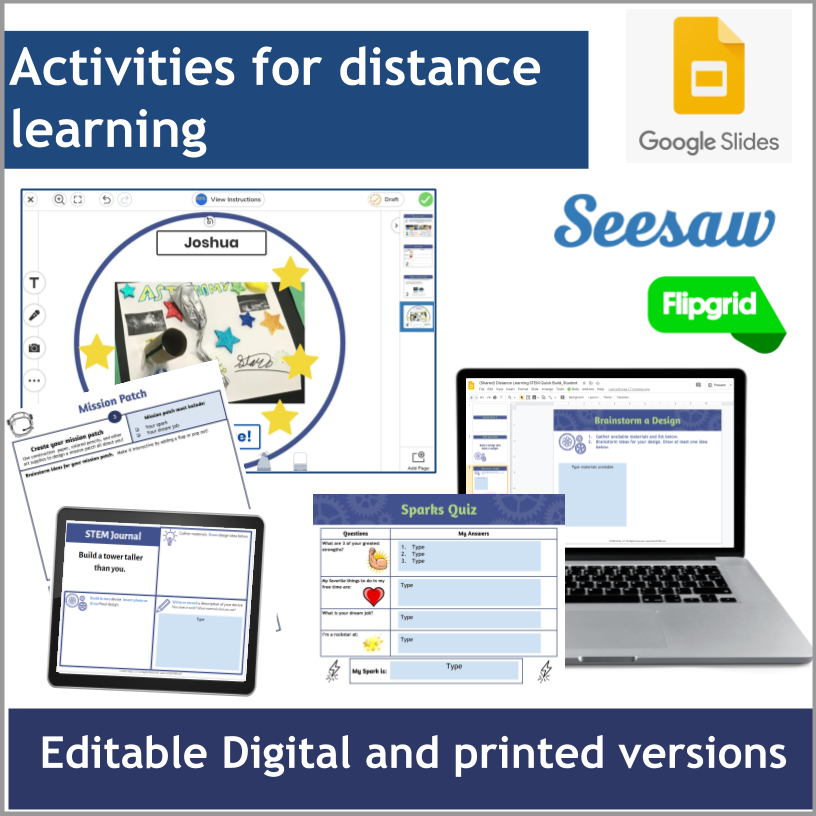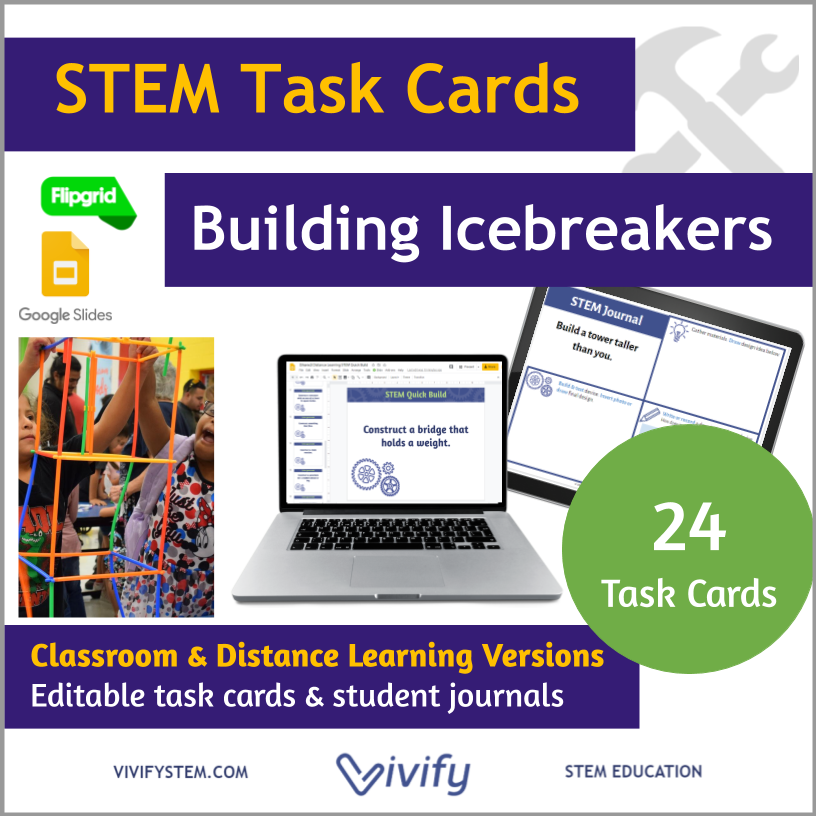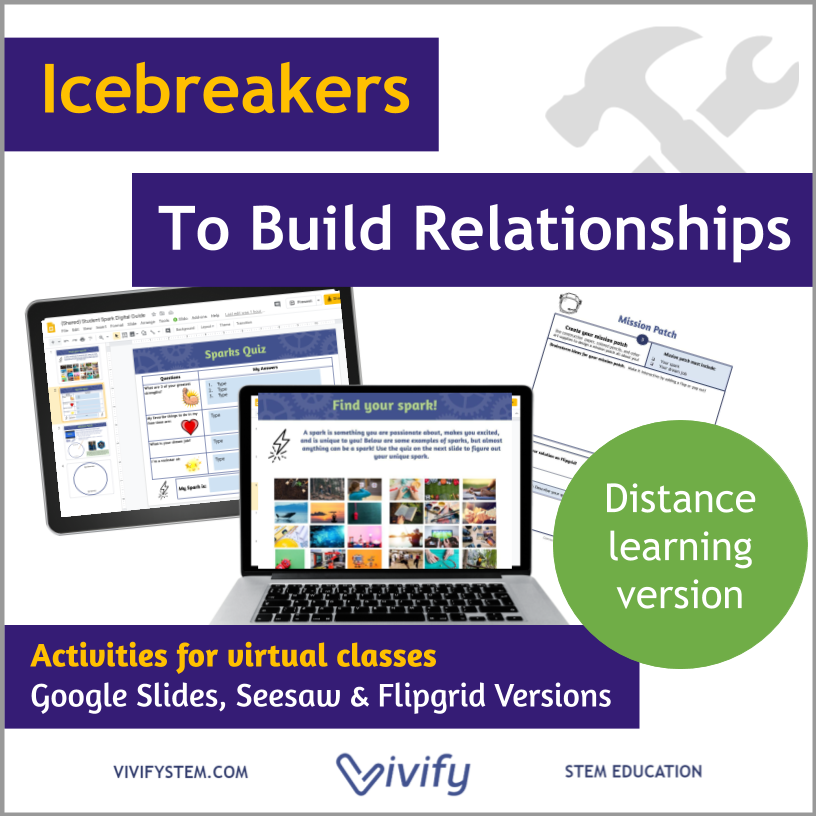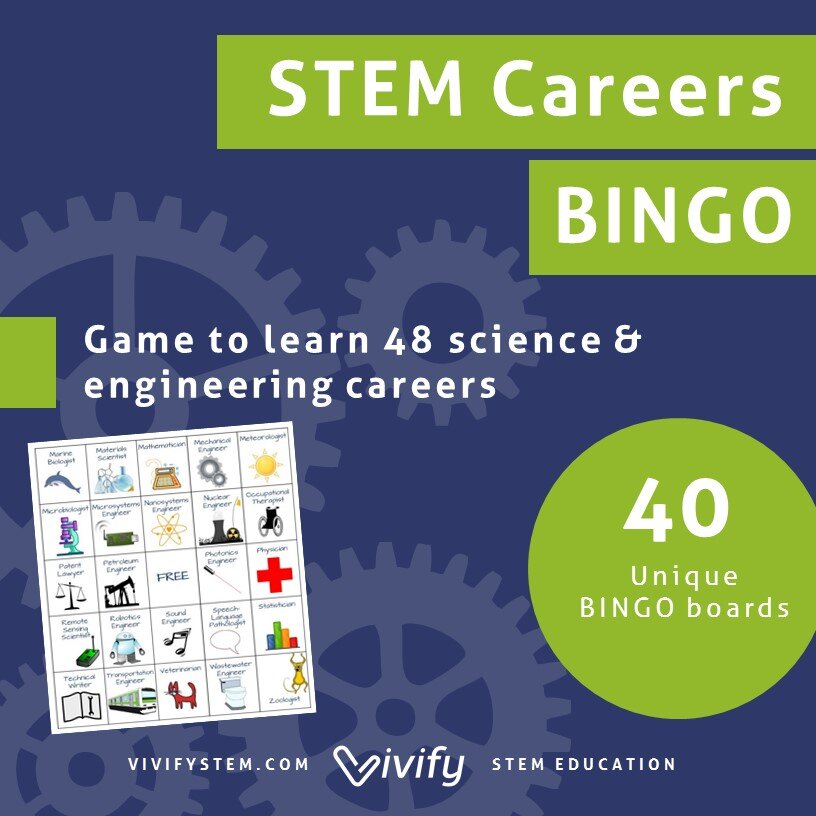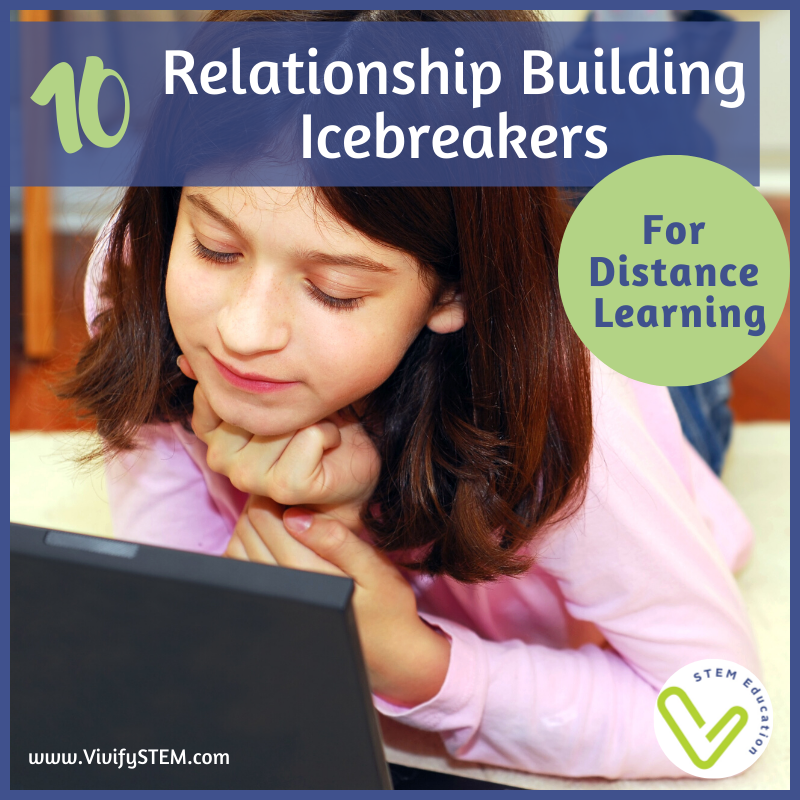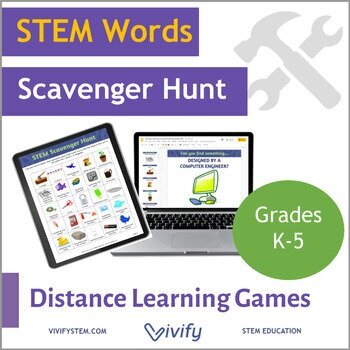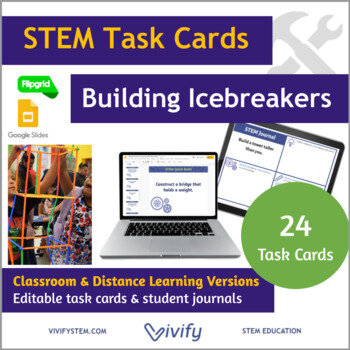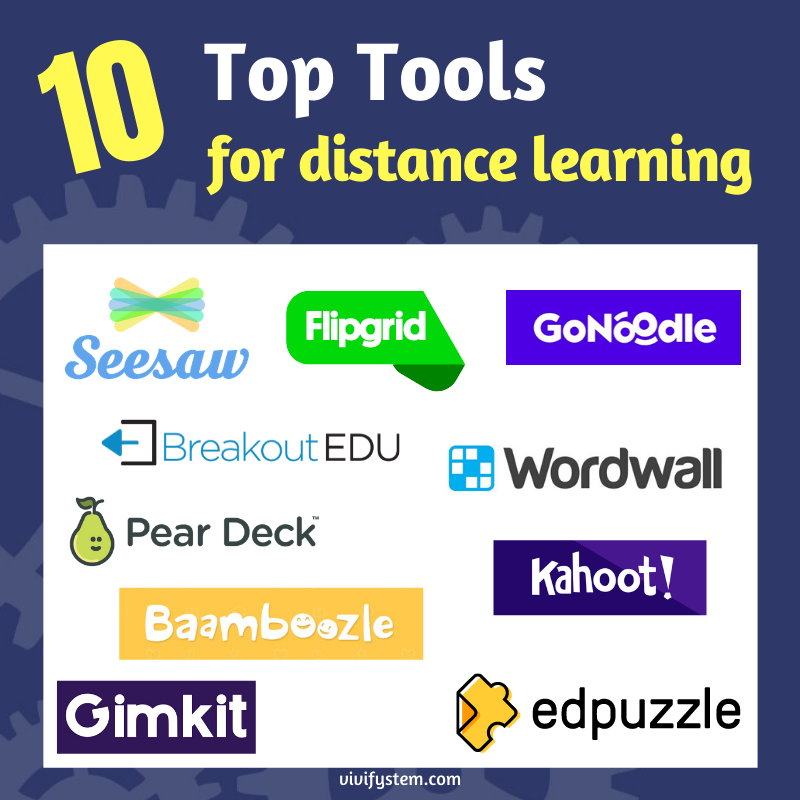50 Distance Learning Icebreakers & Games
July 1, 2021
Updated February 2024
By Natasha Wilkerson
Are you struggling to engage students during distance learning? Here is a list of 50 icebreakers and games to keep students engaged and motivated during remote learning! Perfect for back to school, these activities also develop important 21st-century skills like communication, creativity, and collaboration. The following list is divided into three parts: relationship-building icebreakers, fun games, and top tools for distance learning.
Are you a STEM educator? Check out this post on STEM activities for distance learning.
How to Maintain Relationships via Distance Learning
Before we jump into our list, let’s talk about relationships. Remote learning is having a detrimental impact on the mental health of our students and impacting their social and emotional learning learning. Gone are the daily interactions of peers and social activities like lunch or football games. Instead students are stuck at home, often spending hours on their devices, and they are craving meaningful relationships.
As educators, we must make time to check-in with our students. During a live class session, such as through Zoom or Google Meets, teachers can use the activities provided below to increase engagement and re-connect with students. While some are perfect for enhancing academic learning, many are intended to focus on relationship building and mental health. Only students engaged in learning will find academic success!
But how do we build deeper relationships? The best approach we have found is through using sparks. A spark is what a student is passionate about, what lights them up and gives them well......that “spark”. Sparks were developed by the Search Institute, who explains them as follows: “Sparks are the activities and interests that truly engage kids to be their best. Research shows that kids who know and develop their sparks—and who have adults in their lives to help—have higher grades, better school attendance, and a sense of purpose.”
In our STEM programs, we use different games and activities to help students find their spark, and then we utilize those sparks throughout the year to personalize activities. Click here to read more about using sparks in the classroom, and click here for a guide on sparks via distance learning. Many of the games below are a perfect way to share and connect with student sparks.
10 Get to Know You Icebreakers
These activities are a great way to share student sparks and build relationships with students.
Show & Tell: Ask students to find an object to share with the class. This is a perfect way to have students share their personal sparks. Another option is to share a meaningful object and tell a related story.
Costume or hat day: Ask students to dress up as their favorite character or wear a silly hat. Students who are shy on camera might also prefer wearing a hat or mask during video chats. Students can also dress up related to their spark!
1 Truth & 2 Lies: A twist on the classic game, ask students to share 3 sparks with only one being their true spark. The rest of the class then puts up one finger if they thought the first statement was true, two fingers if they thought the second statement, and three fingers for the third statement.
Charades: Send a word to a student via private message. The student acts out the word, and the class tries to guess what it is. Here is a fun list of words. Students can also act out their sparks for the class to guess.
Create a video: Send students a video where you explain your spark or show it in action. For example, love baking? Show students how to make your favorite recipe!
Flip: We love Flip! Set-up topic boards for your class and have students submit video responses. Videos are moderated by teachers to create a safe environment. We use it for students to share sparks and introduce themselves in the beginning of the year.
Zoom In: Find a photo that represents your spark. Zoom into the photo and have students guess your spark. Keep zooming out until they figure it out. You can also have students take a photo of something from a weird angle or extreme close up and have the class guess the object.
20 Questions: Have students try to guess your spark by asking yes and no questions.
Current events: Share a news story or real-world video related to your spark. For example, if your spark is space, you can share a video of a recent NASA mission.
Virtual Backgrounds: Ask students to create a virtual background that represents their spark. This provides a great visual to help you refer to their spark during the class session.
Need more ideas? Click here for a teacher’s activity guide on icebreakers that build relationships during distance learning.
30 Fun Distance Learning Games
The following activities are perfect for back to school or throughout the year as a way to increase engagement during live class sessions. Some are to add some fun to your class while others can be connected to academic content.
Tell a Joke: Who doesn’t love a good joke? Students can take turns telling their favorite jokes or share via the chat box.
Describe & Draw: Describe to students how to draw an object like a butterfly without revealing the object. Students share drawings and try to guess the object.
Scavenger Hunt: Send your students on a mission to find common objects in their house. This is a great way to practice vocabulary (find an insulator) or share student interests (find your favorite shirt). Check out our STEM words scavenger hunt here.
Pictionary: Via private chat, send a student an object to draw. The student can share their screen and using an application like Paint, draw the object while the class guesses.
Virtual Field Trip: Share your screen and take students on a tour of an art museum or the zoo. Check out a great list of tours here.
Guess the Baby: Parents provide a baby picture and the class needs to guess who it is.
Mad Libs: Use a site like NatGeo’s Funny Fill-In to collect random words from students that generate a hilarious story!
Quick Share: As soon as students log on, share a prompt like “what would you bring on a trip to Mars?”. Have a quick round of sharing with 10 seconds per student or share in the chat box.
Mystery Bag: Show students a bag with a mystery object inside. Students ask questions in the comments then write their guess on a piece of paper and hold it up.
Secret Word: Put one student back into the waiting room of the video meeting. Tell the class a secret word, and then bring the student back. Classmates give clues to help the student guess the word.
Would You Rather: Would you rather live on Mars or underwater? Would you rather be a famous inventor or a famous artist? Ask students to select an option using Kahoot, the polling feature on Zoom, or simply have students hold up 1 or 2 fingers. Find more ideas here.
Guess the Sound: Play a sound and ask students to guess the object. Here is a great video to use. Take it further with a STEM musical instrument challenge.
Quick Build Challenge: Using materials available at home, have students complete a quick build challenge such as designing a tower to hold a stuffed animal. Share results with the class. Find building task cards here.
Mystery Guest: Invite a familiar guest such as the principal or the school nurse. The guest joins in disguise, and the teacher gives clues. Students can guess via private message or ask questions to learn more. At the end, the mystery guest reveals him/herself, and the teacher announces the first person who guessed correctly.
Writing warm-up: Have students answer a thought-provoking prompt as a quick writing warm-up. Students can write responses in the chat box or read to the class. Here is an option for a random question generator.
Trip ABCs: “I went on a trip, and I took .” The first person says a word that starts with A, the second person says the A item, then does B . Each turn, the person repeats all the other items in ABC order, then adds 1 more items depending on the alphabet.
Class Story: “Once upon a time…” The teacher randomly calls on a student to complete the sentence to start the story. The next person provides another sentence to continue the story. Keep going until everyone has a chance!
BINGO Game: Who doesn’t love BINGO? Click here for an option to create a free virtual BINGO game for students. Are you a STEM teacher? Check out this STEM Careers BINGO game for elementary or middle and high school.
Two-Minute Talent Show: Whether singing, using screen share to draw, or having their pet do a trick, ask students to share a quick talent!
Memory Game: Place 20 objects on a tray and take a photo. Share the image on your screen for 30 seconds, stop sharing, then give students a minute to record as many objects they can. Another option is to create a digital tray with clip-art images.
Boggle & Noggle: Students use a grid to create words or number sentences. Click here for Boggle (word version) and Noggle (numbers version) with a great TpT freebie here.
Learn to Draw: Show a YouTube video on how to draw simple objects and ask students to follow along. Here is a great site with video links.
Spin the Wheel Activities: Create your own wheel of activities using this free website. Spin the wheel and have individual students or the whole class complete the challenge like do 10 jumping jacks, find something orange, or draw a monster.
Tongue Twisters: Send students a tongue twister to practice. Have them read the tongue twister to the class and with the class
Good News Sharing: Read out loud an article from Good News Network to bring some positive vibes to the class. Students can share reactions.
Never Have I Ever: Get to know your students with this game by having students create a “I Have” or “I Never” signs. Teacher reads a statement, and everyone holds up a sign saying whether they have or have never done the action. Statements can be silly and fun like “Never have I ever used someone else's toothbrush.” or “Never have I ever sneaked desert before dinner.” Tons of great ideas found here.
Am I a Scientist? Show pictures of real people and have students guess their career. This game can help students break down the stereotypes while showcasing a wide range of careers and professionals. Click here for a version on STEM careers.
Guess the riddle: “What has a face and two hands but no arms or legs?” Post a riddle of the day and have students private message you their guess. Reveal the answer!
MUTE-iny: There is always the one person who forgets to unmute! In this game, you will put yourself on mute and say a sentence really slow. Have students guess in the comments what you are trying to say.
Tomato Ketchup: One student is the detective. They turn on their mic and put their head down so they can't see the screen. Everyone else is muted. The teacher selects a student who switches their mic on and says 'tomato ketchup' in a funny or disguised voice. The detective has to guess the student!
I Spy: Provide clues about one of the students in the class like “I spy someone with a red striped shirt.” Have students guess the student. Another variation is giving clues about an object in the background.
Are you a STEM teacher? Check out this blog post for strategies to teach STEM during live virtual sessions, through student-driven distance learning, and in the classroom with physical distancing.
Top 10 Tools for Distance Learning Activities
Peardeck: Enhance your presentations with interactive polls that provide instant student feedback. Students follow along on their own devices to increase engagement. Learn more here.
Wordwall: From game shows to puzzles, Wordwall has tons of templates or the ability to customize your own game.
Baamboozle Games: A quiz game that is great for end of unit review or pre-assessment. Students can play in teams. Check out the library of STEM resources here.
Breakout Game: Everyone loves an escape room! Check out Breakout EDU for some free options. Students can play independently or in breakout rooms.
Go Noodle: Take a dance break! Have students up and moving with movement and mindfulness videos created by child development experts.
Kahoot Quiz: Host a live interactive Kahoot quiz via videoconferencing. Questions are displayed on a shared screen, and students answer on their devices. Click here to learn more or watch this introduction video.
Gimkit: Another great live quiz tool found here. Students answer on their own devices and earn in-app cash for upgrades and power ups.
Flipgrid: We love Flipgrid! Set-up topic boards for your class and have students submit video responses. Videos are moderated by teachers to create a safe environment. We use Flipgrid for students to share sparks and introduce themselves in the beginning of the year. Read here for using Flipgrid with STEM(pdf), this is a great intro video, and here is a great series of how-to guides.
Seesaw: A popular tool for teachers, we love using Seesaw for students to submit remote assignments. Students “show what they know” using photos, videos, drawings, text, PDFs, and links. All work is in one place moderated by teachers and can easily be shared with families. Learn more here.
Edpuzzle: How can you know if students actually watch assigned videos? With Edpuzzle, upload or link any video and add commentary and comprehension questions to personalize it for your students.

